On a warm, breezy evening under the twinkling lights that line the Guangzhou waterfront, the people of the city are out in force to take their leisure. The classic open-air pastimes of China are represented: plaza dancing aunties move with practiced synchronicity, badminton shuttlecocks soar through the night air and taichi practitioners gesture through their age-old routines. On a particularly wide swath of pavement opposite the Nanfang Dasha, a less familiar activity is underway: skateboarding.
Cool, smiling youth from various districts of the city have gathered to hone their skills, some with the unsteady bravado of overconfident beginners, others with the understated proficiency of seasoned riders. In between runs, the crowd huddles together against the stone embankment at the riverside, laughing, chatting, snacking, sharing jokes and cigarettes. It’s a scene that, though once rare, is now playing itself out all across the PRC.
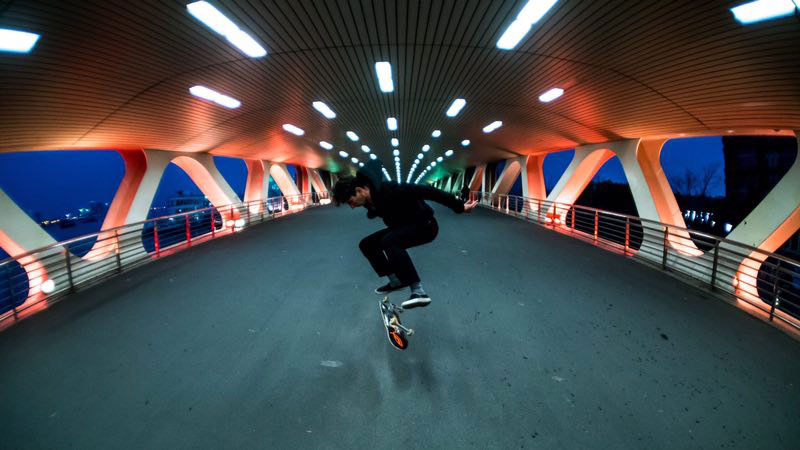
Virtually unheard of until the mid-1980s, skateboarding is fast gaining ground across the country as a popular pursuit, and the PRD is no exception. What started as an edgy subculture is now a sport on the rise. With the historic announcement that skateboarding will be included for the first time in the 2020 Tokyo Olympics propelling the sport to new heights, business, government and foreign talent are coming together with Guangdong youth to determine the future of the sport in the province.
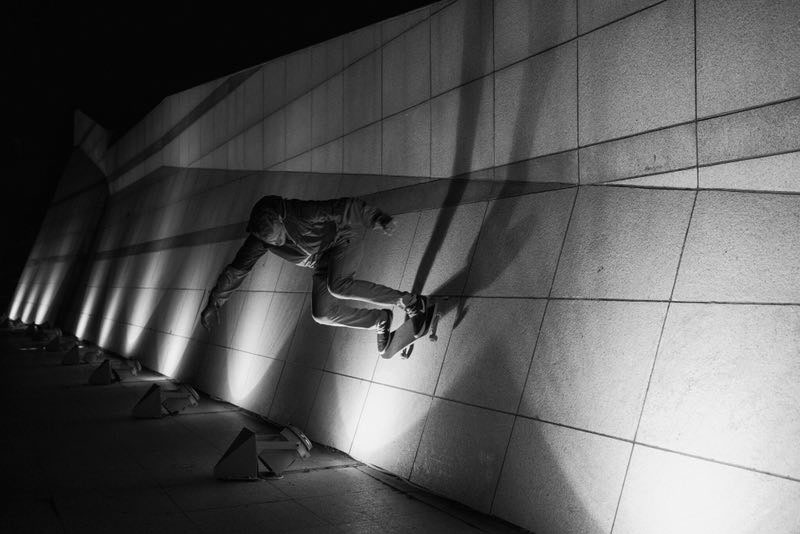
Nowhere is skateboarding’s transformation from back-alley obscurity to public plaza primetime more apparent than Foshan. Jason Guadalajara, a California native who for six years has called the city home, has helped make it happen. After arriving in 2011 with enterprising dreams of manufacturing high quality skate shoes and insoles, Guadalajara and his fpFootwear gear line now exports to more than 15 countries and brings in pros from around the world through to skate the PRD.
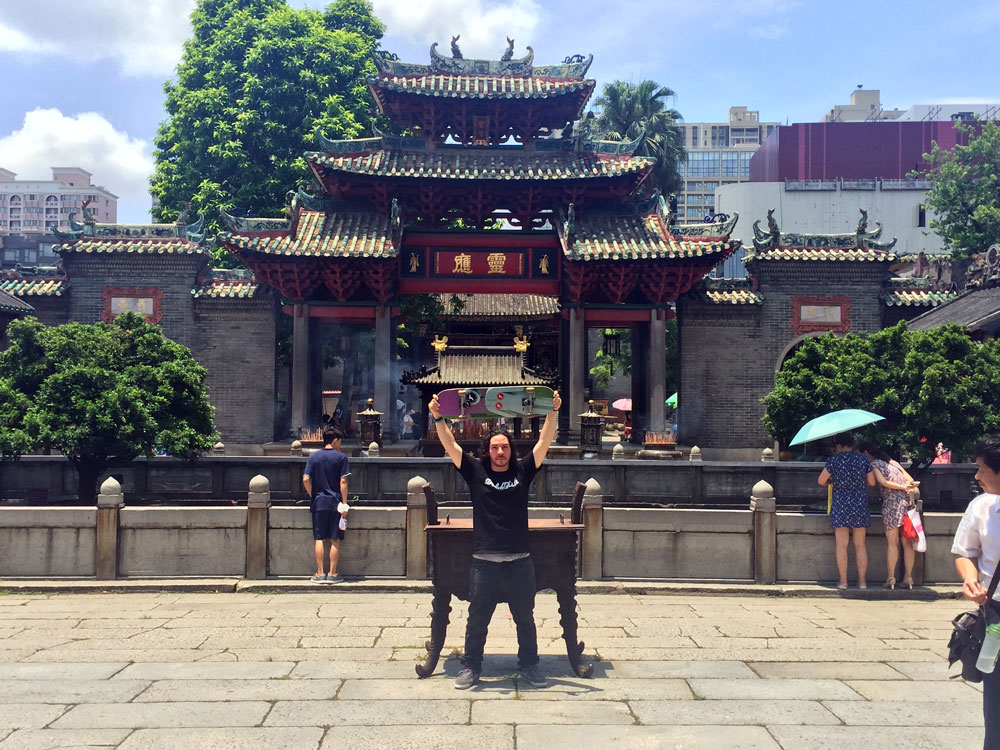
Public architecture in China, Guadalajara tells us, is particularly well suited to street skating, with the preponderance of ‘ledge-plazas’ (parks and squares with numerous benches, steps and railings) offering endless opportunities for ‘slide tricks’ and grinds.
An unusual laissez-faire attitude from authorities also nurtured the scene, in contrast to the more draconian enforcement found in other countries. “In LA if you wanted to skateboard in the street you’ve got like five or 10 minutes to land your trick or the cops are gonna come and move you along. Whereas in China, you have total freedom.” Rather than chasing him away, Guadalajara says fascinated Chinese security guards would buy him a beer, sit down with a bag of peanuts and just watch him skate.
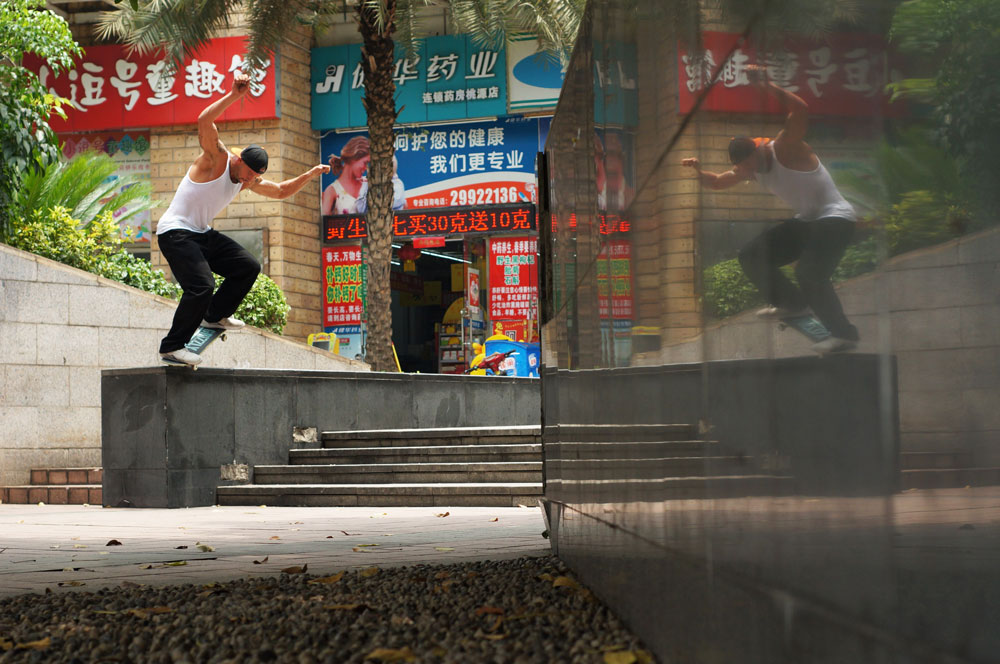
“I call it a ‘Communist Wonderland’,” Guadalajara says in reference to the title of a popular skateboarding video he shot and produced, filmed entirely in Foshan. “This is supposedly a country with limited freedoms but in a lot of respects it’s completely the opposite to the United States. Even if you get kicked out of one place you can just skate for five minutes and you’ll find another ledge plaza or some cool thing. It’s littered with spots.”

In a way, it’s not surprising that skateboarding has found a ready audience in China. It requires discipline, practice, control, balance and of course finesse. It’s not unlike traditional acrobatics or gymnastics in the way it draws a crowd. “American kungfu on four wheels,” Guadalajara calls it. Perhaps it’s only fitting that, here in Bruce Lee’s ancestral hometown, the culture is taking root.

Slowly but surely, however, that hands-off attitude from authorities towards street skating is beginning to change. The bombshell announcement of the International Olympic Committee that skateboarding will soon make its Olympic debut as a full-fledged event has sent shockwaves through the scene. China, in its quest for gold medals, is throwing its full weight behind the development of the sport, opening up enormous skate parks and training facilities to groom its next generation of champions. Guangzhou got its massive skate park megaplex in University City, while Shenzhen was granted its National Olympic Skateboard Training Base in Shekou. For many in the scene, though, this increasing formalization and professionalization is proving to be a double-edged sword.
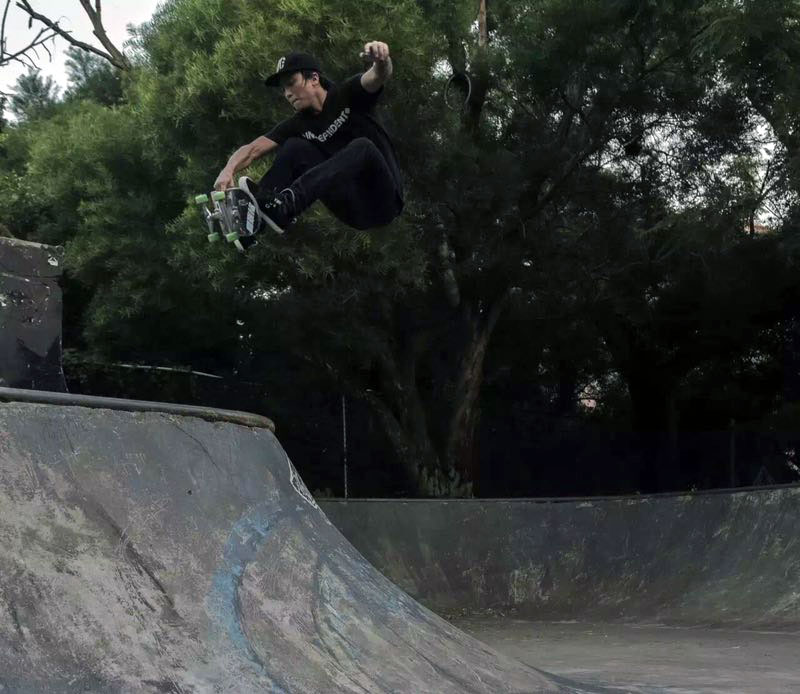
Skateboarding of course has its roots as an edgy, countercultural activity, forged in the streets. Riders would interact with their urban environment in unexpected ways, negotiating novel obstacles creatively, with courage and skill. As much as anything else, it was about art and expression. While skate parks provide a welcome environment to practice highly technical maneuvers, they also serve to confine skateboarding into a legalized zone. The uniformity and purpose-built design of the obstacles add an element of monotony and repetition at the expense of style and imagination. Meanwhile, the presence of skate parks can have a chilling effect on the street scene, delegitimizing skating that happens outside of these captive enclosures.
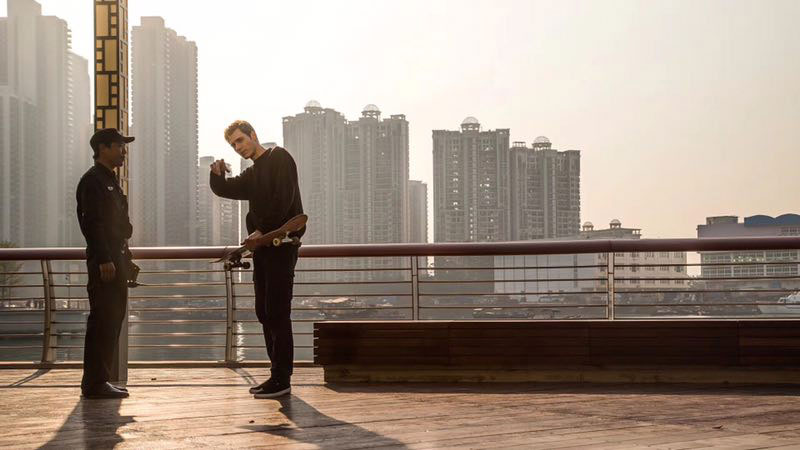
The recent history of Shenzhen’s skate scene is a great case study in this phenomenon playing out. Sergey Sidey, a Russian transplant to the city, has been cutting up its streets and plazas for more than three years, usually with a camera in hand. He tells us that Shenzhen was once a veritable paradise for skaters, with the iconic Shenzhen Museum and Civic Center serving as its beating heart. More and more, however, securitization, surveillance cameras and skateproofing landscape fixtures known as ‘skate-stoppers’ have pushed the once aboveboard pastime further underground.

“It’s a huge problem for skaters,” Sidey says. “Most of the spots are either skateproofed or ‘security proofed,’ meaning that security guards don’t let us skate there. We usually go to those places at night or come back every half hour until the guards make us leave.”
When we ask what it looks like when guards ‘make you leave,’ Sergey shows us a video he shot of a skater being shoved, mid-grind, into the hedges of a Shenzhen ledge plaza by uniformed guards using a meter-long anti-riot pole.
In Foshan, too, the increasing clampdown on public skating in unsanctioned places is palpable. Zhaoxiang Park, a city plaza once beloved by local skaters and international pros alike for its uniquely grindable handrails now lies silent, the well-worn rails rendered unskatable by thick steel rings welded on by the authorities in a deliberate effort to keep four-wheeled stuntsters at bay.

Elsewhere in Foshan, though, the street-ethos of the skate scene seems alive and well. In a sign of the times, the UNIM Mall (Guangfo Line, Leigang Station) has set up a skate park out front and a couple wheeled-up youngsters sporting piercings and tattoos are practicing their craft. Interestingly, they eschew the newly built ramps and bowls for some of the more tempting obstacles found elsewhere in the commercial landscape. Ledges, benches and handrails all seem to be fair game. One, a lanky, baseball-capped rider, who goes by the name Meinianda (after a popular orange soda drink from childhood) flashes an easy smile, “I bought my first board in Foshan three years ago,” he says. “You’ll laugh, but at first I started riding because I thought it made me look suave.” Watching him try time and time again to nail a challenging nose grind, it’s clear his love for the sport goes deeper than appearances. “I’m gonna stick it this time for sure!” he grins before gathering speed for another approach.
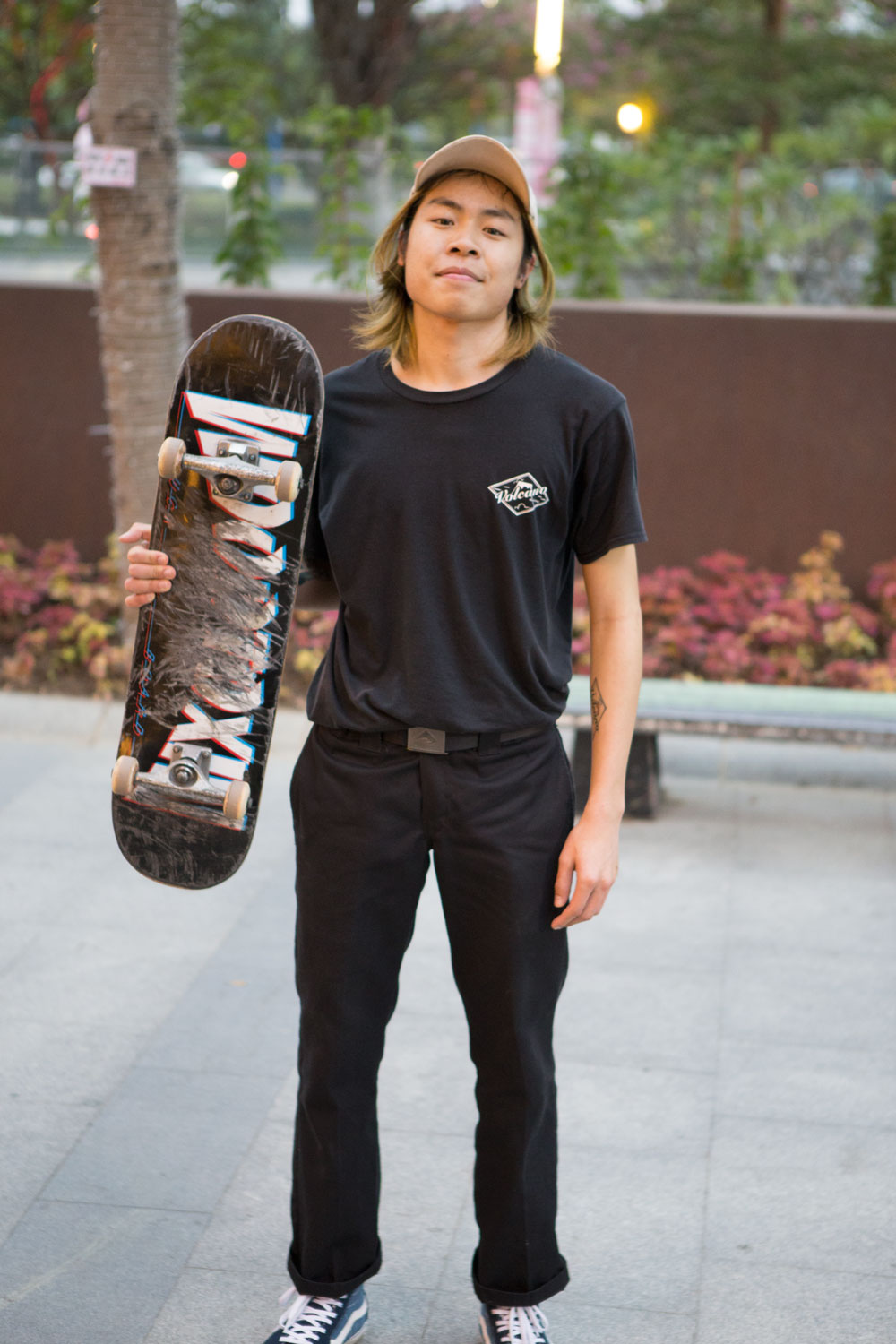
Like any scene in the midst of changes and contradictions, South China’s skating landscape has some new dynamics emerging. Though the sport and its associated cultural trappings have historically been dominated by men and boys, women are increasingly starting to take part. Longboarding in particular has been where many of the country’s female skaters have found their niche.
A video released by Vogue Korea in 2016 which featured amateur longboarder Ko Hyojoon twirling and dancing her way through the streets of Seoul in playful, feminine outfits flew in the face of the stereotypical grunginess of the traditional skateboard aesthetic. “The instant that video came out,” Guadalajara tells us, “longboarding just exploded in China. It turned into this new thing. Absolutely, there’s a lot of girls doing it now.”
Today, it’s not uncommon to see female youth among the riders plying many of Guangdong’s skate plazas, usually on longboards. Meanwhile, a cursory search for affordable skateboards on Taobao yields pages of results featuring female models emulating Ko’s carefree style of board-top dance and fancy footwork alongside products marketed as wuban or ‘danceboards’ – a category that scarcely existed just years ago.
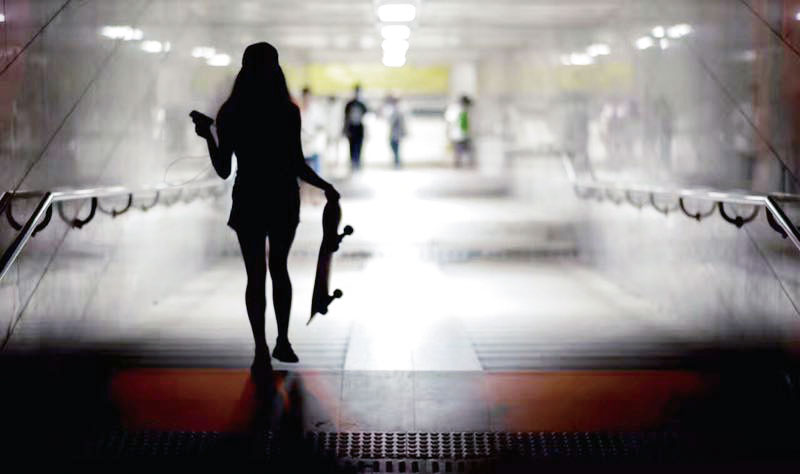
In this increasingly commercialized and regimented environment, some have managed to strike a delicate balance. Glory, a Foshan native, quit a stable job in sales and marketing to pursue his dream of opening his own skate shop. Today, he owns Volcano, Foshan’s first full spectrum skate shop, and served as the coach of Guangdong’s Provincial Skateboarding Team last year ahead of the sport’s debut at the China National Games. Glory still commands the respect and admiration of the kids on the street, even as he proudly sports his team uniform.

“Skateboarding these past years in Foshan has been steadily growing,” Glory tells us. “A lot of Chinese parents took a negative view of skateboarding, thinking it was a sport for ‘bad kids.’ But now, with Olympic recognition and the support of the government, a lot of people’s view of skateboarding is starting to change for the better.”
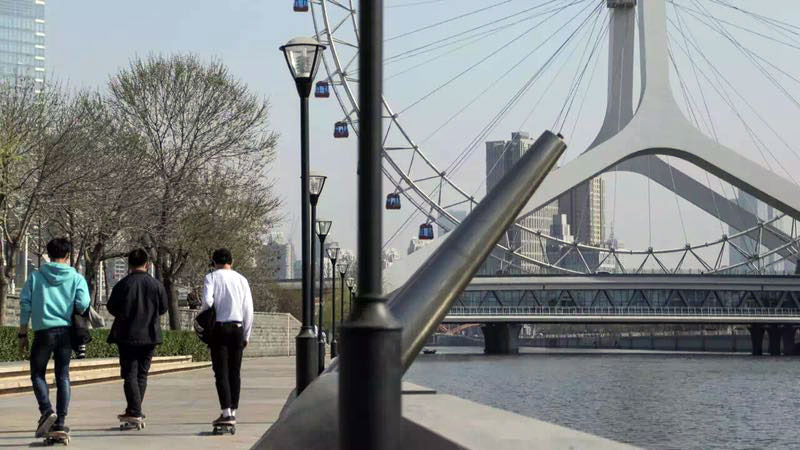
Back at the riverside in Guangzhou, the kids are getting ready to pack it in for the night. For their part, they’re still learning things the old-fashioned way, with scrapes and bruises to prove it. Will one of them be China’s next gold medal superstar, winning national glory on the world stage? It’s hard to say, but as they kick-push their way off into the night, skirting tourists and baby strollers, it seems like the last thing on their minds.
[Images via @fpinsoles, @sergeysidey, @gloryjame]





















0 User Comments